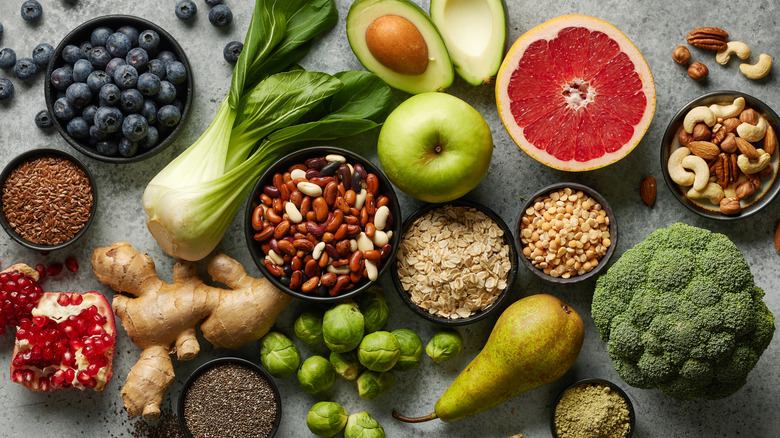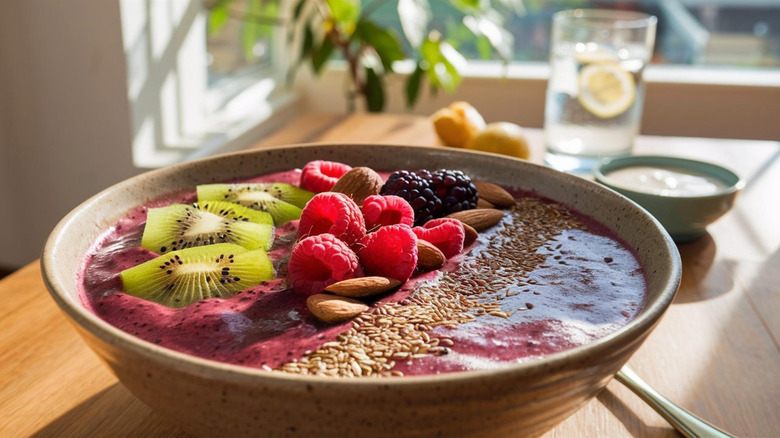Are 'Superfoods' Real Or Just A Buzzy Marketing Ploy?
It's highly likely that you've come across the term "superfoods" at some point. Whether the word has caught your eye on a grocery store label, you've read it online, or perhaps you've heard it mentioned on social media, it's a phrase that's been quite hard to miss. The term's widespread use has even earned it a place in the Merriam-Webster Dictionary where it's defined as: "a food (such as salmon, broccoli, or blueberries) that is rich in compounds (such as antioxidants, fiber, or fatty acids) considered beneficial to a person's health." Although this term might seem like a recently coined concept, it actually originated in the early 20th century and was circulated not by medical professionals but by The United Fruit Company. The company used this term as part of its marketing strategy to boost sales of bananas, a major import at the time. Soon after, medical journals began publishing articles that confirmed bananas' health benefits and banana sales soared.
This first example with bananas mirrors many nearly identical modern instances where a familiar or newly trendy food is introduced as a "superfood." Characterizing such foods with an attractive prefix like "super" suggests these foods have extraordinary health values. Therefore, food companies catering to health-conscious audiences will strategically employ the term in advertising campaigns or product packaging to entice consumers and boost sales. Use of the term on food packaging rose by 36% in 2015 worldwide, with foods like quinoa, chia seeds, and kale experiencing a massive boom in popularity not long after.
Superfoods or super-hype?
Many foods labeled as "superfoods" are backed by research that confirms they do provide numerous health benefits. However, although the term is legitimate in this sense, an individual or company could technically label any food as a superfood, even if it's not the healthiest thing in the grocery store. This is because there's no scientific principle or federal guideline regulating when something can or can't be labeled as a superfood. With that in mind, if you're swayed to purchase a product because the packet states it contains superfoods, it's best to read the ingredient list before sticking it in your cart. With the term used to classify many naturally nutritious foods, this label is frequently exploited as a marketing tactic by food and beverage companies to raise prices and profits.
Moreover, focusing solely on consuming a limited list of superfoods can actually be detrimental to your diet as it can cause individuals to prioritize eating only specific ingredients. Nutrition experts recommend a diet rich in a diverse range of whole, unrefined foods, including fruits, root and green vegetables, fish, meats, eggs, whole grains, legumes, nuts, and seeds. This approach not only means you eat a wide variety of essential vitamins and minerals but also provides a more enjoyable, balanced diet, rather than planning meals solely around products labeled as "superfoods."

